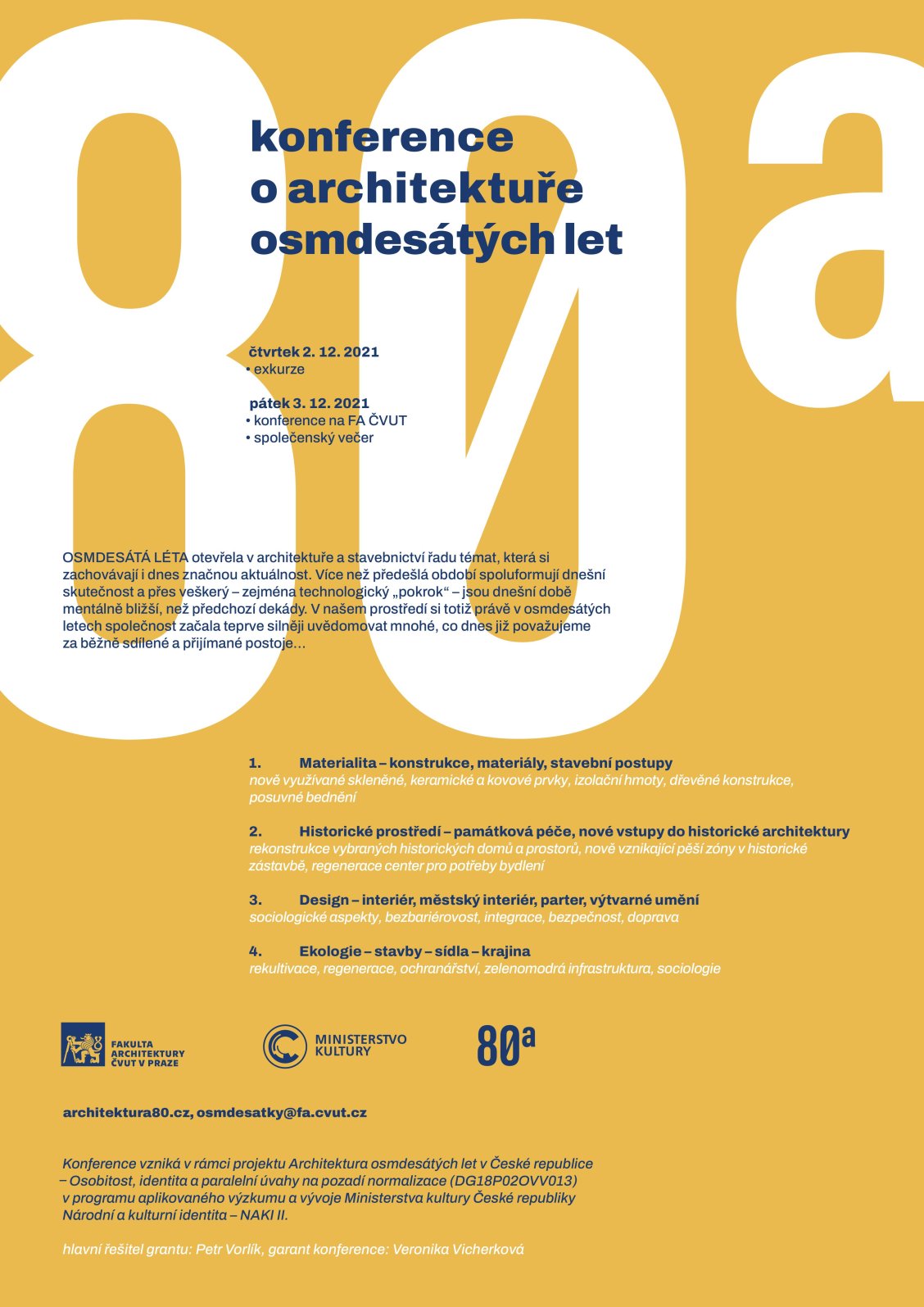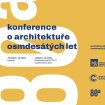The aim of the conference is to meet and debate between personalities of various professions connected with architecture and construction culture of the 1980s in Czechoslovakia. The conference is intended for the direct parties involved, architects, artists, designers, conservationists, theoreticians, and aims to confront the view of the "rememberer" with the view of today's researcher.
The conference is part of the project Architecture of the 1980s in the Czech Republic – Specificity, Identity and Parallel Reflections on the Background of Normalization (DG18P02OVV013) in the Applied Research and Development Programme of the Ministry of Culture of the Czech Republic National and Cultural Identity – NAKI II. Its principal researcher is Prof. Petr Vorlík from the Department of Theory and History of Architecture, FA CTU.
The conference has four main thematic areas, which try to capture the development tendencies and currents of thought in the field of architecture at that time – not only in the sphere of official architectural congresses, but also in informal discussions. The circuits are set up to highlight the diversity and layers of the architecture of the 1980s, to give space for critical evaluation, and at the same time to try to define and map the important moments and themes characterizing the events of the time.
1. topic
Materiality – design, materials, construction methods
Although the fundamental change from traditional construction methods towards mechanisation and prefabrication, as well as the expansion of the basic stock of building materials, had already taken place in the previous decades, the 1980s to some extent abandoned the rigid enforcement of prescribed practices and allowed for more alternative ways, whether it was the creative use of available resources/elements or the possibility of returning to some traditional technologies. At the same time, a number of norms and rules were put into practice that influence the shape of the built environment to this day.
newly used glass, ceramic and metal elements, insulating materials, wooden structures, sliding formwork
2. topic
Historic environment – conservation, new entrances to historic architecture
The changing relationship to the architectural heritage of the past is still reflected in the 1980s, on the one hand in the widespread demolition of historic buildings for the construction of politically accented buildings, but also in the awareness of the potential of heritage buildings / historic environment in terms of commercial, residential and recreational use.
reconstruction of selected historic buildings and spaces, newly emerging pedestrian zones in historic buildings, regeneration of centres for housing purposes
3. topic
Design – interior, urban interior, parterre, fine art
The interiors of mainly public buildings, the parterres of newly emerging post-modernist housing estates, their (dis)interconnectedness with older buildings and related small elements, the pursuit of humanization and creativity in everyday life, and visual art as an important part of the architecture of public buildings and public spaces.
sociological aspects, accessibility, integration, safety, transport
4. topic
Ecology – buildings – settlements – landscape
The critical state of the environment, as well as the action of international organizations, has brought attention to a new kind of conservation – to ecology, not only as an effort to eliminate the negative effects of man on nature, but as a broadly conceived science dealing with questions of the mutual coexistence of organisms, their communities and the environment.
reclamation, regeneration, conservation, green and blue infrastructure, sociology
Events implemented during the conference:
Thursday 2. 12. 2021
Friday 3. 12. 2021
- conference at FA CTU
- social evening
A valid vaccination or a day-old PCR test will be a prerequisite for participation.




